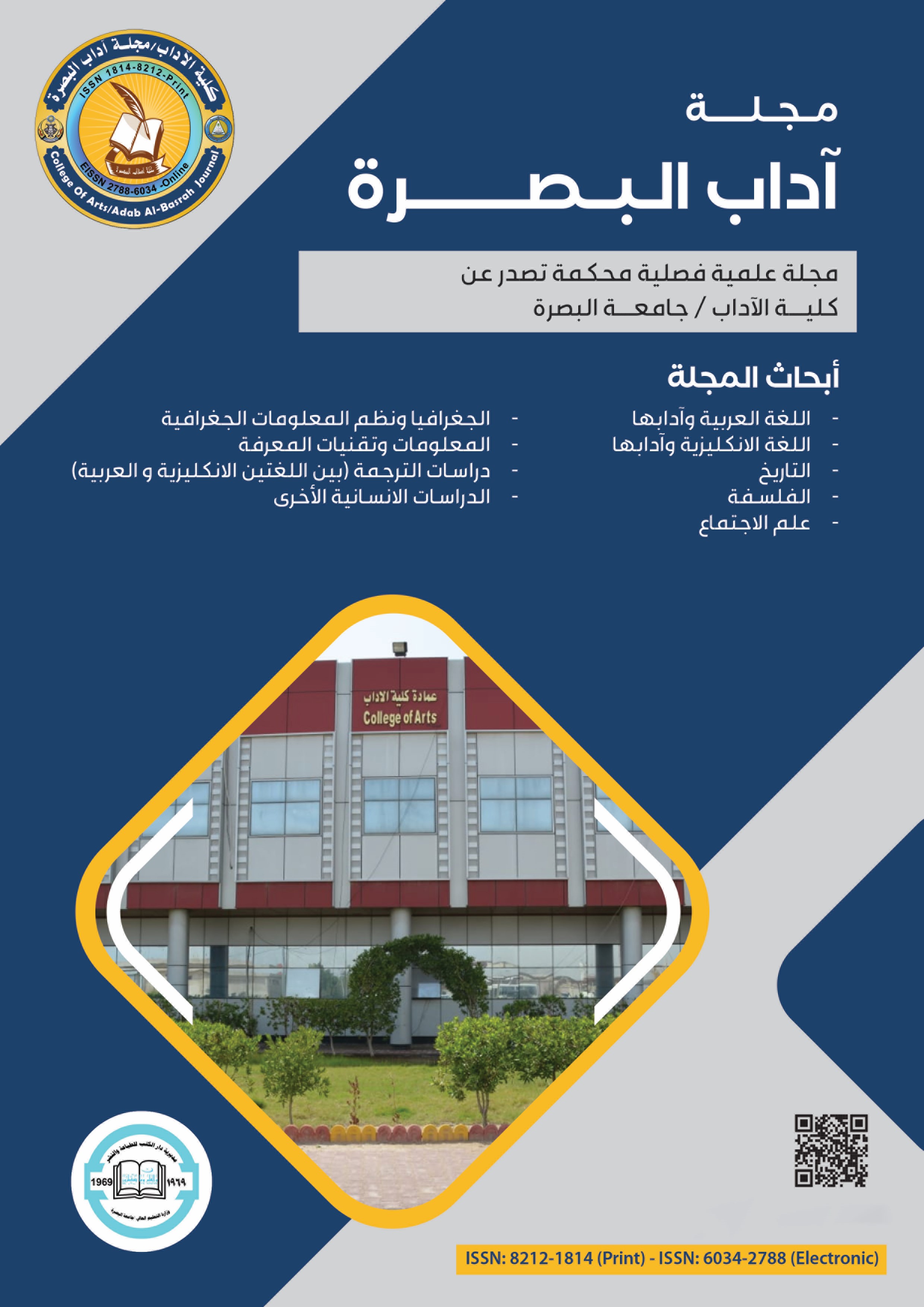Abstract
This study addressed argumentation in the poem (The Guard of the Elephant (lima raat binti anni muzmi), in which it is clearly evident. The poem discusses the theme of departure, which is a type of discourse that allows for differing opinions. This type of discourse aligns with rhetoric, which thrives in topics open to disagreement. The poem is a discourse of complaint and plea, both of which employ argumentation to achieve the speakers goal. The study was divided into two parts: a theoretical section and an analytical section. In the theoretical section, the study discussed the concept of Ainiyyah (poems of a particular meter) in classical literature and why it has been marginalized. The section also provided an overview of the life of the Guard of the Elephant and explored the central themes of the poem, namely complaint and plea. The analytical section focused on identifying the rhetorical techniques, connections, and tools employed by the poet to achieve his objective in constructing the discourse. The study concluded with several key findings, the most important of which are: the Ainiyyah of the Guard of the Elephant is one of the marginalized discourses in our ancient Arab heritage, and it is one of the first speeches built around a single scene, that of farewell. This structure resulted in a unified thematic and emotional composition. The study also concluded that while the poets daughter emotionally influenced him, she was unable to persuade him to stay; he prioritized the collective good over his personal desires.
Keywords
Argumentation
Argumentative Links
consequences
Emotion
mask
Abstract
تناولت هذه الدراسة الحجاج في قصيدة حاجب الفيل العينية )لما رأت بنتي أني مزمع(؛ لظهور الحجاج فيها بشكل واضح؛ فهي تناقش موضوع الرحيل، وهو من الخطابات التي تحتمل الاختلاف في الرأي، وتنسجم هذه الخطابات مع الحجاج الذي ينمو ويزدهر في الموضوعات التي تحتمل الاختلاف. وتعد القصيدة خطاب شكوى واستعطاف، وكلاهما من الأغراض التي يتوسل صاحبها فيها بالحجاج للوصول إلى غايته. وقسمت الدراسة إلى قسمين: قسم نظري، وقسم تحليلي. أما القسم النظري؛ فقد تحدث عن العينية في كتب التراث، وسبب تهميشها. وعرضت الدراسة فيه، محطات من حياة حاجب الفيل، وموضوع القصيدة: الشكوى والاستعطاف. وأما القسم التحليلي، فقد عني بالكشف عن التقنيات الحجاجية، والروابط والأدوات الحجاجية التي وظفها الشاعر لتحقيق غايته من إنشاء الخطاب. وخلصت الدراسة إلى العديد من النتائج، من أهمها: أن عينية حاجب الفيل من الخطابات المهمشة في تراثنا العربي القديم، وتعد أولى الخطابات التي استغرق بناؤها مشهدًا واحدًا هو مشهد الوداع؛ ولذا انتظمت بها وحدة موضوعية وشعورية. كما انتهت الدراسة إلى أن ابنة الشاعر استطاعت أن تؤثر بالشاعر عاطفيًا، لكنها لم تستطع أن تقنعه بالقعود؛ فقد قدم مصلحة النحن على مصلحة الذات.
Keywords
الحجاج، العاطفة، العواقب، القناع، الروابط الحجاجية.
